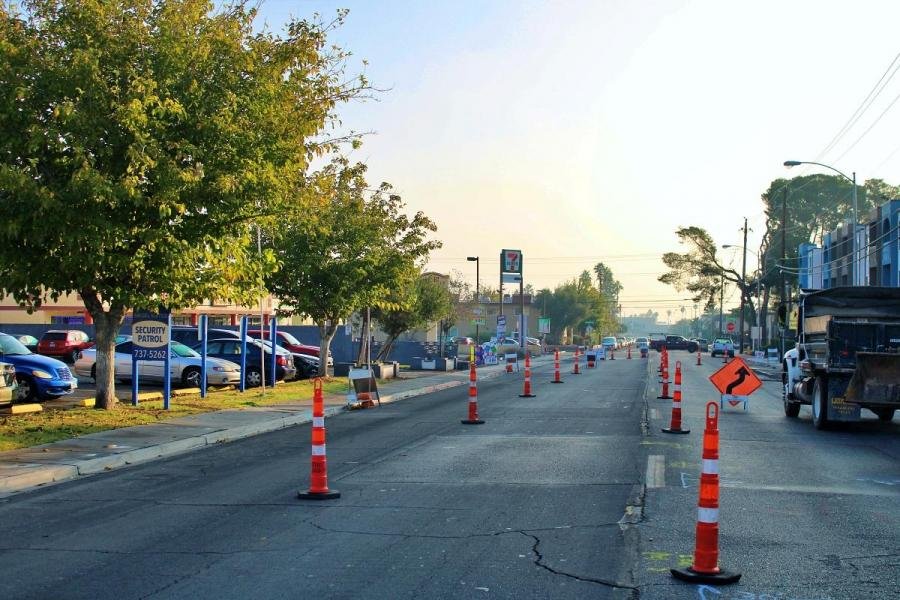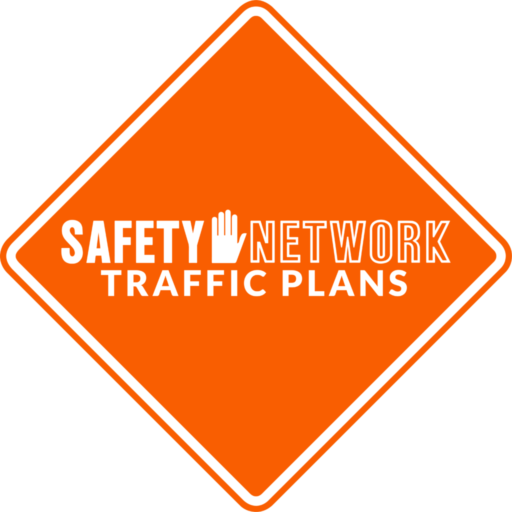Traffic control planning is a critical aspect of any roadwork or construction project. Whether you’re working on a simple street repair or a large-scale infrastructure project, ensuring the safe flow of traffic around your work zone is essential. Proper traffic control planning not only keeps workers safe but also ensures that drivers and pedestrians navigate safely through construction areas. At Safety Network Plans, we specialize in creating customized, compliant traffic control plans that meet local regulations and industry standards. In this article, we will walk you through the essential steps involved in the traffic control planning process—from obtaining permits to setting up traffic control on the street.

1. Understanding Traffic Control Plans and Their Importance
A Traffic Control Plan (TCP) is a blueprint that outlines how traffic will be managed around a construction or roadwork site. It includes everything from lane closures, detours, signage, and barricades to the specific placement of traffic cones and warning lights. A well-thought-out TCP is essential for ensuring safe movement through and around the work zone for both drivers and pedestrians.
- Why It Matters: Proper traffic control keeps the flow of traffic smooth, preventing accidents, delays, and frustration for drivers.
- How It Helps: A well-crafted TCP ensures that your project complies with safety standards, local regulations, and minimizes the risk of traffic-related accidents.
2. Step 1: Obtaining the Necessary Permits
Before you can begin any traffic control plan, it’s important to obtain the required permits from local authorities. Permitting processes vary by location but generally involve submitting a detailed plan for review. Authorities will assess the proposed traffic patterns, road closures, detours, and other safety measures to ensure compliance with city, state, and federal regulations.
- Why It Matters: Without the proper permits, your project could be delayed or halted, and you may face fines.
- How It Helps: Obtaining the necessary permits ensures that your project is legally compliant and meets local government and safety standards.
3. Step 2: Site Evaluation and Assessment
The next step in the traffic control planning process is evaluating the site where the work will occur. A thorough evaluation will help identify potential hazards, assess the size of the construction zone, and determine the specific traffic needs based on the location. Factors such as traffic volume, pedestrian traffic, road conditions, and the scope of the work are essential to consider.
- Why It Matters: A clear understanding of the site’s challenges ensures that the traffic control plan is practical and effective.
- How It Helps: Proper site evaluation helps create a traffic control plan tailored to the specific needs of the project, enhancing safety and minimizing disruptions.
4. Step 3: Designing the Traffic Control Plan
Once the site is evaluated, the next step is to design the traffic control plan itself. This includes determining the exact locations for signs, cones, barriers, and detour routes. The goal is to provide clear, concise direction for drivers and pedestrians while minimizing the impact on traffic flow. The design must also account for safety zones for workers, emergency vehicle access, and potential changes in traffic patterns.
- Why It Matters: A well-designed traffic control plan ensures clear communication with road users and maximizes safety on-site.
- How It Helps: The right design ensures that traffic is redirected efficiently and safely while maintaining clear communication with drivers and pedestrians.
5. Step 4: Submitting the Plan for Approval
Once the traffic control plan is created, it must be submitted for approval from the relevant local authorities. This includes traffic engineers, municipal planners, and other regulatory bodies that ensure the plan aligns with road safety codes. These experts will review the plan and make recommendations or request modifications before granting final approval.
- Why It Matters: Failure to receive approval can delay the project or result in the need to revise the plan.
- How It Helps: Submitting the plan for approval ensures that your project meets all safety and regulatory standards, avoiding delays and ensuring legal compliance.
6. Step 5: Implementing the Traffic Control Measures
With an approved plan in hand, it’s time to implement the traffic control measures. This step involves setting up the necessary signs, barriers, detour routes, and warning lights. The goal is to ensure that traffic is redirected safely and that workers are protected from vehicles.
- Why It Matters: Proper setup ensures the traffic control plan is executed safely and effectively from day one.
- How It Helps: Correct implementation of the plan minimizes risks to workers and drivers, while maintaining the flow of traffic around the construction zone.
7. Step 6: Monitoring and Adjusting the Plan
Once traffic control measures are in place, continuous monitoring is essential. This includes observing traffic flow, addressing issues as they arise, and making adjustments when necessary. For example, if construction delays or unexpected traffic patterns develop, the plan may need to be updated to maintain safety and efficiency.
- Why It Matters: Road conditions and traffic patterns can change quickly, requiring flexible responses to ensure safety.
- How It Helps: Monitoring and adjusting the plan allows you to address any emerging issues in real-time, ensuring that the project proceeds smoothly and safely.
8. Step 7: Post-Project Evaluation and Reporting
After the project is completed, it’s important to conduct a post-project evaluation. This includes reviewing the effectiveness of the traffic control plan, identifying any safety issues that arose, and determining if adjustments are needed for future projects. It’s also important to document the results for regulatory compliance and future reference.
- Why It Matters: Evaluating the plan helps improve future traffic control measures and ensures compliance with all safety standards.
- How It Helps: Post-project evaluation provides valuable insights to refine traffic control strategies for future events or projects.
Conclusion
Traffic control planning is a critical component of any roadwork or construction project. From obtaining permits and evaluating the site to designing the traffic flow and monitoring its implementation, each step is essential to ensuring the safety of both workers and road users. At Safety Network Plans, we specialize in creating customized traffic control plans that are compliant, effective, and efficient. Contact us today to learn more about how we can help with your next project.
Contact Us
For expert traffic control planning services, contact Safety Network Plans today:
- Phone: Call (559) 291-8000
- Email: help@safetynetworkplans.com
- Website: safetynetworkplans.com


